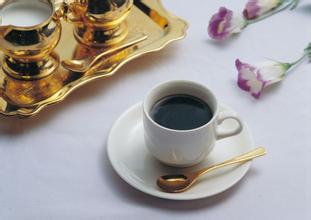Introduction of Grinding scale for Coffee Bean Variety characteristics of Esmeralda Manor in Panama

Brazilian Bourbon Santos Brazil is located in South America, about 15 degrees south latitude. Brazilian coffee culture began in 1727 in the north of Brazil when a Francesco de Melo Palheta smuggled coffee seeds from France to Brazil. At the time, this was something the French, who now monopolize the coffee business, strongly opposed. Those seeds were the ancestors of the more than 300 million Brazilian coffee trees that now exist. In Brazil's early history, coffee started very slowly. When Mr Palhta returned to Brazil, coffee culture took off in Pará, at the mouth of the Amazon River. Coffee cultivation area is wide, is the world's largest coffee exporter. But the famous "Santos" takes its name from the port where coffee is shipped, and the valley surrounding the capital, Sao Paulo, is Brazil's most representative coffee. It is characterized by a smooth palate, high acidity, medium body and a nutty finish. Although Brazilian coffee is of little professional value, it is excellent for blending. Because coffee production is huge, the price is not very expensive. Characteristics: Pure and smooth, high acidity, medium consistency, with a slight nutty taste. Colombia Organic Coffee Colombian Supreme Condor De La Sierra Organic coffee This is 100% pollution-free green food. Colombia Organic Coffee Certified 100% Organic Coffee From the best coffee in Colombia, Supremo is grown on small farms high in the mountains of northwest Colombia, and because it is protected, it is harvested manually. We highly recommend it to coffee lovers. Characteristics: Very strong coffee, medium acidity, with a hint of creamy taste in the mouth. Colombia is located in northwest South America, bordered by the Pacific Ocean and the Atlantic Ocean. Panama in the northwest, Venezuela in the east, Brazil in the southeast, Peru in the south, and Ecuador in the southwest. Planted area: 1.1 million hectares. Population dependent on coffee: Approximately 35,000 households are indirectly or directly engaged in coffee farming, processing and marketing. Importance of coffee: 2.5% of national income, 11.6% of total agricultural production, 20% of total export earnings. Species: high-quality arabica coffee. Yield: traditional farms-580 kg/ha; modern farms-1475 kg/ha. Altitude: 800-1,900 m. Main harvest period: 55% in November/February of each year; second harvest period: 23% in April/June of each year. Total annual output: 14,000,000 bags,(980,000 tons) 70 kg/bag. Production ranking: The world's largest producer of washed coffee, the largest exporter of Arabica coffee, accounting for 15% of the world's total coffee production. In Colombia as a whole, it is the second largest coffee producer in the world. But as far as coffee is concerned, there are more than 200 grades, which means that coffee is very regional. Aroco Coffee Roasting (Beijing) Co., Ltd. uses Colombian premium coffee, mainly grown in Colombia's famous coffee production area "Land Forest" area. Characteristics: medium acidity, strong alcohol, slightly acidic aftertaste and attract more people like it
Important Notice :
前街咖啡 FrontStreet Coffee has moved to new addredd:
FrontStreet Coffee Address: 315,Donghua East Road,GuangZhou
Tel:020 38364473
- Prev

Introduction to the taste grinding scale of the regional treatment method for coffee varieties in Lazimus Manor, Colombia
Colombia's mild climate, humid air, and diverse climate make it a harvest season all year round, with different kinds of coffee ripening at different times. What they grow is Arabica coffee beans of unique quality, and the coffee made from this coffee bean has a rich taste and endless aftertaste, which can be called fine coffee. Nowadays, many people combine Colombian coffee with high quality and delicious coffee.
- Next

Introduction to the regional treatment method for describing the flavor of coffee varieties in Santa Barara Manor, Honduras
For coffee production, the geographical conditions of Honduras are no less than those of its neighboring coffee-producing countries such as Guatemala and Nicaragua. There are 280000 hectares of coffee plantations in Honduras, mainly small coffee plantations, most of which are less than 3.5ha. These coffee plantations account for 60% of the total coffee production in Honduras. In the coffee garden, because the planting land belongs to
Related
- Does Rose Summer choose Blue, Green or Red? Detailed explanation of Rose Summer Coffee plots and Classification in Panamanian Jade Manor
- What is the difference between the origin, producing area, processing plant, cooperative and manor of coffee beans?
- How fine does the espresso powder fit? how to grind the espresso?
- Sca coffee roasting degree color card coffee roasting degree 8 roasting color values what do you mean?
- The practice of lattes: how to make lattes at home
- Introduction to Indonesian Fine Coffee beans-- Java Coffee producing area of Indonesian Arabica Coffee
- How much will the flavor of light and medium roasted rose summer be expressed? What baking level is rose summer suitable for?
- Introduction to the characteristics of washing, sun-drying or wet-planing coffee commonly used in Mantenin, Indonesia
- Price characteristics of Arabica Coffee Bean Starbucks introduction to Manning Coffee Bean Taste producing area Variety Manor
- What is the authentic Yega flavor? What are the flavor characteristics of the really excellent Yejasuffi coffee beans?

